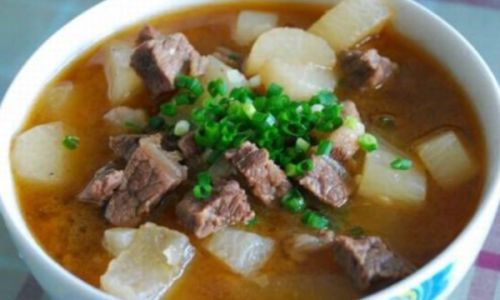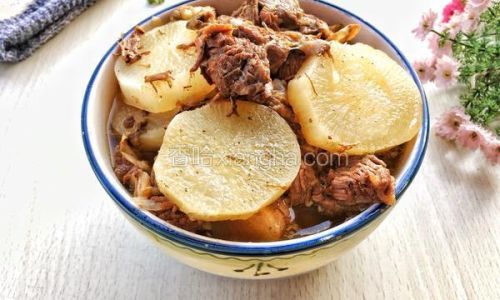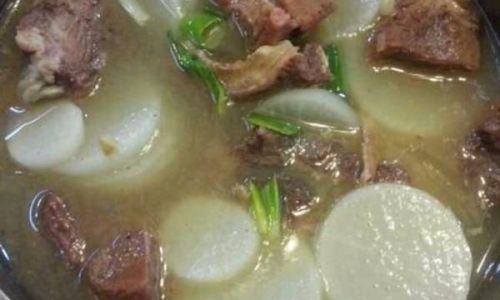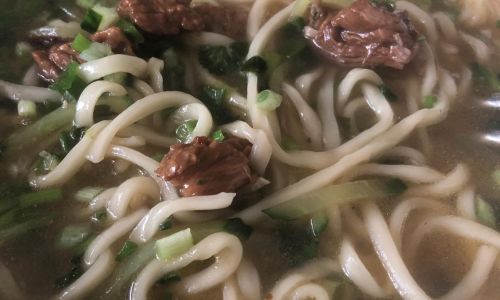Introduction
In the realm of comfort food, there’s nothing quite like a hearty stew that warms the soul and satisfies the appetite. Among the myriad of stew recipes, daikon and pork stew stands out as a timeless classic, especially in East Asian cuisine. Daikon, also known as white radish or Chinese radish, pairs beautifully with tender pork, creating a dish that is both flavorful and nutritious. This article will guide you through the process of making a delicious homemade daikon and pork stew, from selecting the right ingredients to perfecting the cooking technique. By the end, you’ll be equipped to whip up a batch that rivals any restaurant-quality dish, all within the comfort of your own home.
Understanding the Ingredients
Before diving into the recipe, let’s delve into the key ingredients and their roles in this stew:

-
Daikon (White Radish): Daikon has a mild, slightly sweet flavor with a crisp texture when raw but becomes tender and flavorful when cooked. It’s known for its digestive benefits and ability to absorb flavors from other ingredients, making it an excellent base for stews.
-
Pork: For this stew, pork shoulder or pork belly are ideal choices due to their high fat content, which renders beautifully during slow cooking, adding richness and moisture to the dish.
-
Aromatics: Garlic, ginger, and onions form the backbone of the stew’s aroma and flavor. They help to build a complex, savory profile that complements the pork and daikon.
-
Seasonings: Soy sauce, mirin (a sweet rice wine), sesame oil, and black pepper are essential for seasoning. These ingredients add depth, sweetness, and a hint of spice to the stew.
-
Liquid: Broth or water is crucial for creating the stewing liquid. Chicken or pork broth can add additional layers of flavor, while water works perfectly well if you prefer a cleaner taste.
-
Optional Additions: You can enhance your stew with additional vegetables like carrots, potatoes, or shiitake mushrooms, as well as spices like star anise or cinnamon for a more intricate flavor profile.
Preparing the Ingredients
-
Daikon: Peel the daikon and cut it into chunks or thick slices, depending on your preference. Aim for uniform sizes to ensure even cooking.
-
Pork: Trim any excess fat from the pork, then cut it into bite-sized pieces. Marinating the pork with a mixture of soy sauce, mirin, and garlic powder for 30 minutes can deepen its flavor.
-
Aromatics: Peel and finely chop the garlic, ginger, and onions. These will be sautéed to release their flavors before adding the main ingredients.
-
Seasonings: Measure out all your seasonings beforehand to avoid any last-minute慌乱.

Step-by-Step Recipe
Step 1: Sautéing the Aromatics
Begin by heating a large, heavy-bottomed pot or Dutch oven over medium-high heat. Add a tablespoon of sesame oil and, once hot, add the chopped onions. Sauté until translucent, about 3-4 minutes. Add the garlic and ginger, stirring constantly to prevent burning. Cook for another 1-2 minutes until fragrant.
Step 2: Browning the Pork
Increase the heat to high and add the pork pieces to the pot, spreading them out in a single layer. Allow them to sear undisturbed for about 2-3 minutes on each side until they develop a nice golden-brown crust. This step is crucial for locking in juices and adding a layer of caramelized flavor to the stew.
Step 3: Adding the Daikon and Seasonings
Once the pork is browned, add the daikon pieces to the pot. Pour in enough broth or water to cover the ingredients by about an inch. Add the soy sauce, mirin, and a pinch of black pepper. If using optional ingredients like carrots or potatoes, add them at this stage.
Step 4: Simmering
Bring the mixture to a boil, then reduce the heat to low. Cover the pot and let the stew simmer gently for about 1.5 to 2 hours, or until the pork is tender and the daikon is fork-tender. If using spices like star anise or cinnamon, add them now and let them infuse their flavors into the stew.
Step 5: Taste and Adjust
After the stew has cooked for the recommended time, taste it and adjust the seasoning as needed. You may want to add more soy sauce for saltiness, a splash of mirin for sweetness, or a pinch of black pepper for heat.

Step 6: Final Touches
Once the flavors have melded together and the ingredients are cooked to perfection, remove the pot from heat. If desired, you can finish the stew with a drizzle of sesame oil for added aroma and richness. Serve hot, garnished with chopped green onions or fresh cilantro for a burst of color and freshness.
Serving Suggestions
Daikon and pork stew is a versatile dish that pairs well with a variety of sides. Here are a few suggestions to elevate your meal:
- Rice: A steaming bowl of jasmine or white rice is the classic accompaniment, soaking up the savory broth.
- Noodles: Udon or soba noodles can be added to the stew or served on the side for a heartier meal.
- Vegetables: Steamed or roasted vegetables like broccoli, bell peppers, or green beans provide a crunchy contrast to the tender stew.
- Pickled Vegetables: Kimchi or pickled daikon can add a tangy, refreshing element to the dish.
Storage and Reheating
Leftover stew can be stored in an airtight container in the refrigerator for up to 3 days. To reheat, place the stew in a pot on the stove over low heat, stirring occasionally until warmed through. Alternatively, you can reheat individual portions in the microwave.
Conclusion
Making homemade daikon and pork stew may seem like a daunting task, but with the right ingredients and technique, it becomes a rewarding culinary endeavor. This stew embodies the essence of comfort food, with its tender meat, flavorful vegetables, and rich broth. It’s a dish that not only nourishes the body but also brings people together, creating lasting memories around the dinner table. So, gather your ingredients, roll up your sleeves, and embark on a culinary journey that will leave you with a satisfying, delicious meal and a sense of accomplishment. Happy cooking!





0 comments